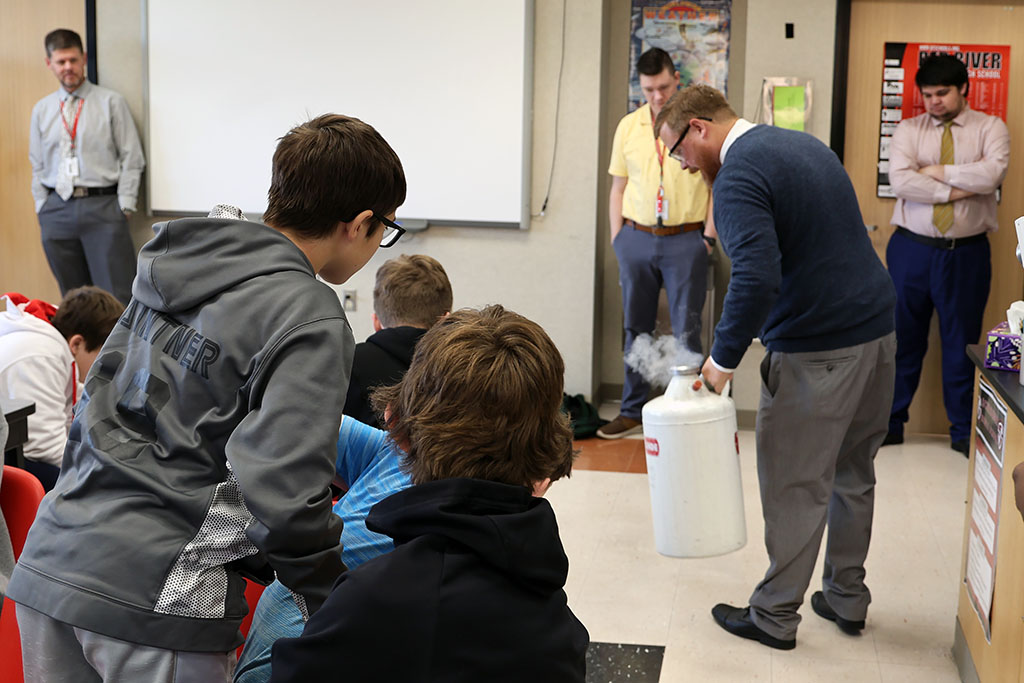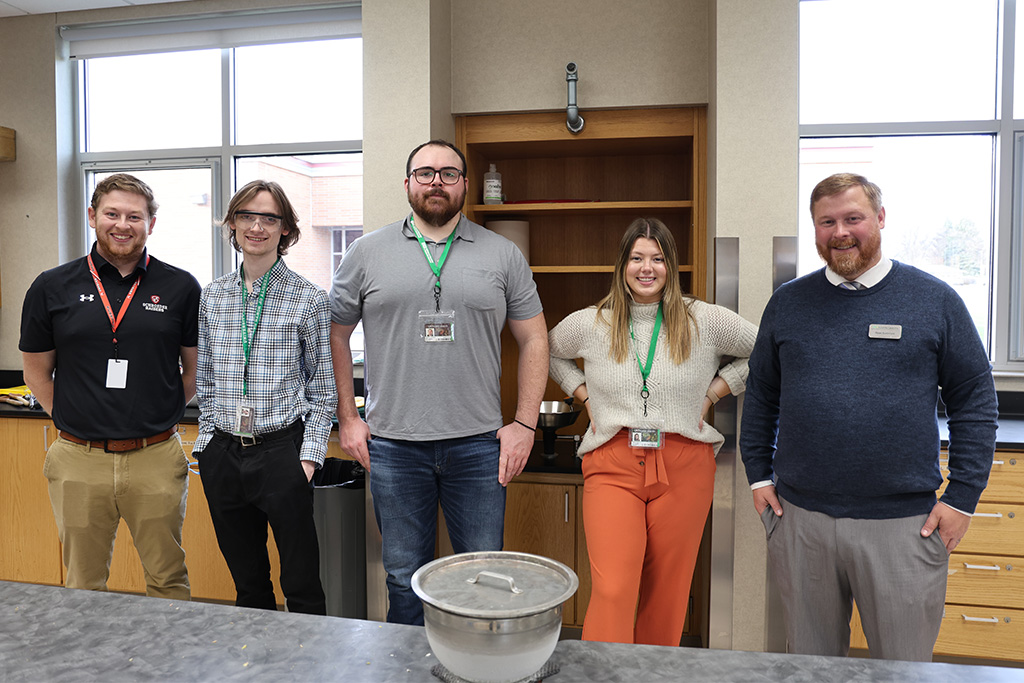From banana splits (flash frozen) to splitting atoms
UND professor, science-education students spark wonder in minds of Grand Forks middle schoolers
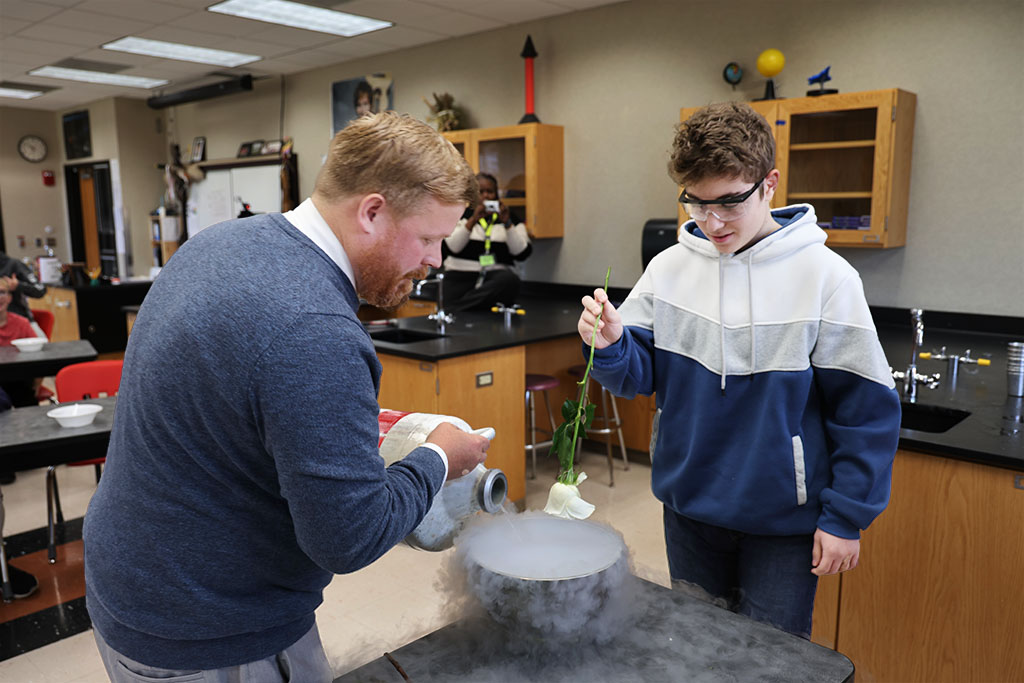
Q. What do you get when you mix about 2 cups of boiling water with an equal amount of liquid nitrogen?
A. You get one giant poof!, 24 awestruck eighth-graders and possibly a half-dozen or more future teachers and scientists.
* * *
At least that’s the hope of Ryan Summers, associate professor of Science Education in the Department of Teaching, Leadership & Professional Practice within UND’s College of Education & Human Development.
The distinguished Rose Isabella Kelly Fischer Professor, along with three of his students preparing to be middle and high school science teachers, recently took their science show on the road to Grand Forks’ Schroeder Middle School. Their visit was at the invitation of Summers’ former student and now Schroeder science teacher Tom Twedell.
“We’re going to do a whole suite of demonstrations involving liquid nitrogen, which is a cryogenic — it’s very, very cold,” Summers tells a guest before the students arrive. “Coming in, many of them may have heard about it, but they probably don’t appreciate just how cold it is. We’re going to do some fun visual experiments to get them thinking about that and about how it interacts with other materials to change their physical properties.”
Those materials would include not only the boiling water but also what looked to be the fixings for a pretty swag banana split party.
As UND student Haley Curry blew up balloons, fellow students Jacob Lindemann and Andrew Simons assisted Summers in peeling bananas and stringing strawberries on long, metal skewers. They also brought a double-insulated pressure cooker, a bucket of store-bought, melted chocolate ice cream, ingredients for making vanilla ice cream, bouncy balls and a bouquet of long-stemmed roses. (Hmm, this was getting interesting.)
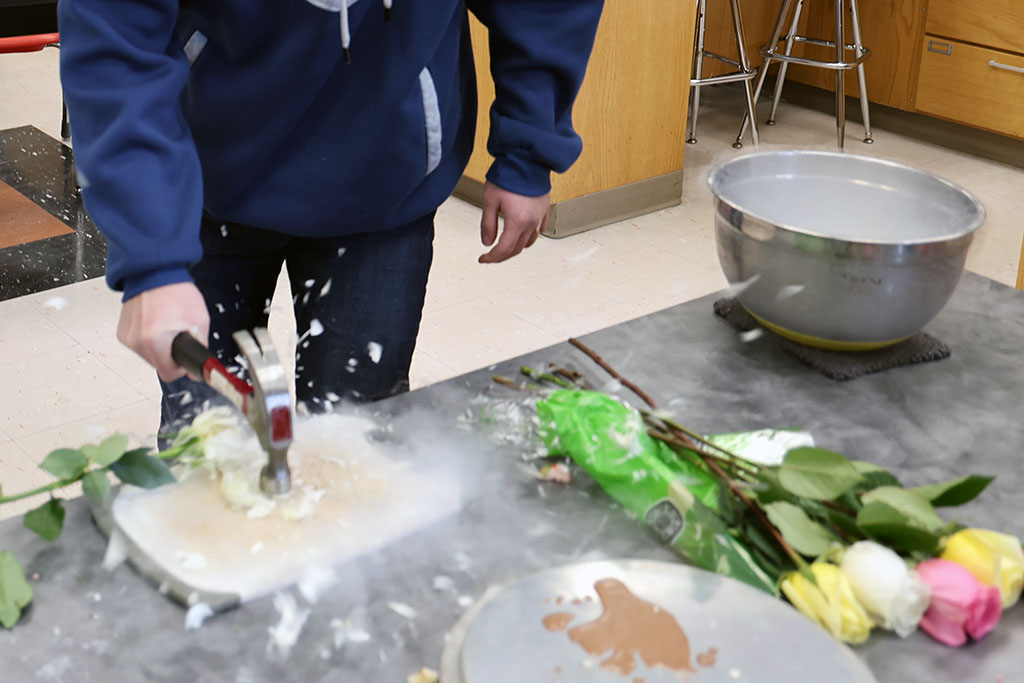
The wheels of wonder turn
Middle school is a pivotal time in the development of students’ interest in science, Summers and Twedell explained. In fact, they said by the time students reach high school, many of them already have decided whether science is going to play a big role in their lives.
“That’s why it’s so important (at this age) to show them science is more than a bunch of rules, facts and memorization,” Summers said. “If you can create that sense of wonder and show them science hands-on, it can be an incredibly powerful experience.”
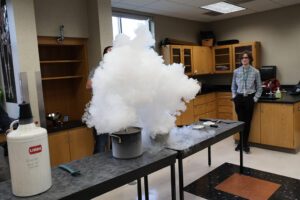
And Lindemann said he’s certainly living proof of that. For him, the curiosity and “aha” moments never get old.
“I was that kid who was always asking questions. ‘Why is there lightning? Why do we have clouds? Why are there earthquakes? Why is that mountain there?’” he replayed out loud.
And now at age 23 in front of the class: What is going to happen when this boiling water (that’s 212 degrees Fahrenheit, by the way) hits liquid nitrogen at 320 degrees below zero?
The reaction was a surprise even to Lindemann. He had watched the experiment on YouTube, he said, but he’d never before done it himself.
“Wow! That’s cool!” he said with a grin, while lifting his arms to mimic a huge explosion and blowing out a loud “Booouf!”
“The little nerd in me is very happy today. I didn’t expect that to be that big. All I ever saw was little clouds, and that went all the way to the ceiling!”
He and Summers explained to the students that what they saw wasn’t actually a cloud, but rather a violent and instant physical reaction caused by the 500-degree difference between the water and liquid nitrogen. On a smaller scale, it’s similar to what happens to your breath on a cold winter day. The water vapor freezes, crystalizes and condenses, giving the appearance of a cloud or mist.
“This interaction also creates a lot of nitrogen gas, which can be a concern, but we fortunately had access to a large, well-ventilated lab space,” Summers added.
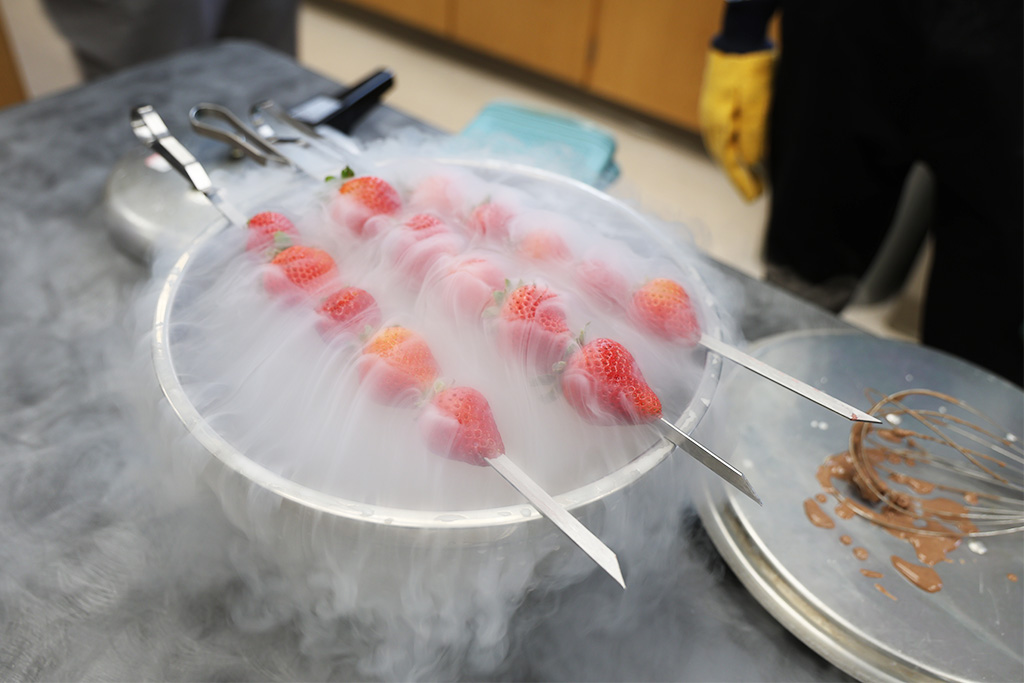
A smashing good time
The students may have been equally mesmerized by the giant “cloud,” but they were even more excited when given the chance to goggle up and swing a hammer at some flash-frozen fruit. The bananas and strawberries shattered like glass after all their liquid was turned to ice.
“Normally, we would plan for longer arcs of instruction,” Summers said. “But we get one day here, so we’re going to do as much as we can to make science engaging and exciting.”
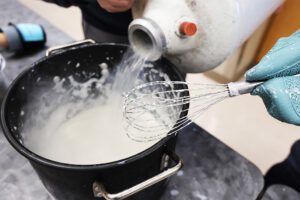
And part of that lesson also included exploring how the extreme cold changed the physical characteristics of balloons, bouncy balls and delicate roses. The balloons appeared to lose all of their air only to “fill” back up as they warmed. The rubber balls bounced more like marbles. And the brittle roses were pulverized.
Similarly, the marshmallows lost their squish, and Ping-Pong balls exploded when thrown to the floor.
Before the hour was over, the students and educators volleyed questions and answers as they enjoyed an ice cream treat. That, too, was whipped up in under a minute.
“Ew,” that’s like cottage cheese, one student said of the homemade vanilla that might have been rushed just a smidge.
“It’s OK,” Theo Paye said. “But can I get a scoop of that chocolate?”
“Most of the time when you ask people what they remember learning in science class, they remember things like this,” Summers said. “They remember the demonstrations and the monumental kinds of projects — it’s not so much the notes, the worksheets and the definitions.”
Added Lindemann: “That’s why I want to be a teacher. I want to make science fun. I want to inspire kids and make them question how the world works.”
****
Editor’s note: UND Associate Professor of Science Education Ryan Summers also wishes to express his gratitude to the UND Chemistry Department for providing the dewar – a specialized type of vacuum flask – to store the liquid nitrogen, and to Airgas of Grand Forks for making this event possible by providing the liquid nitrogen for the demonstration at Schroeder Middle School.
